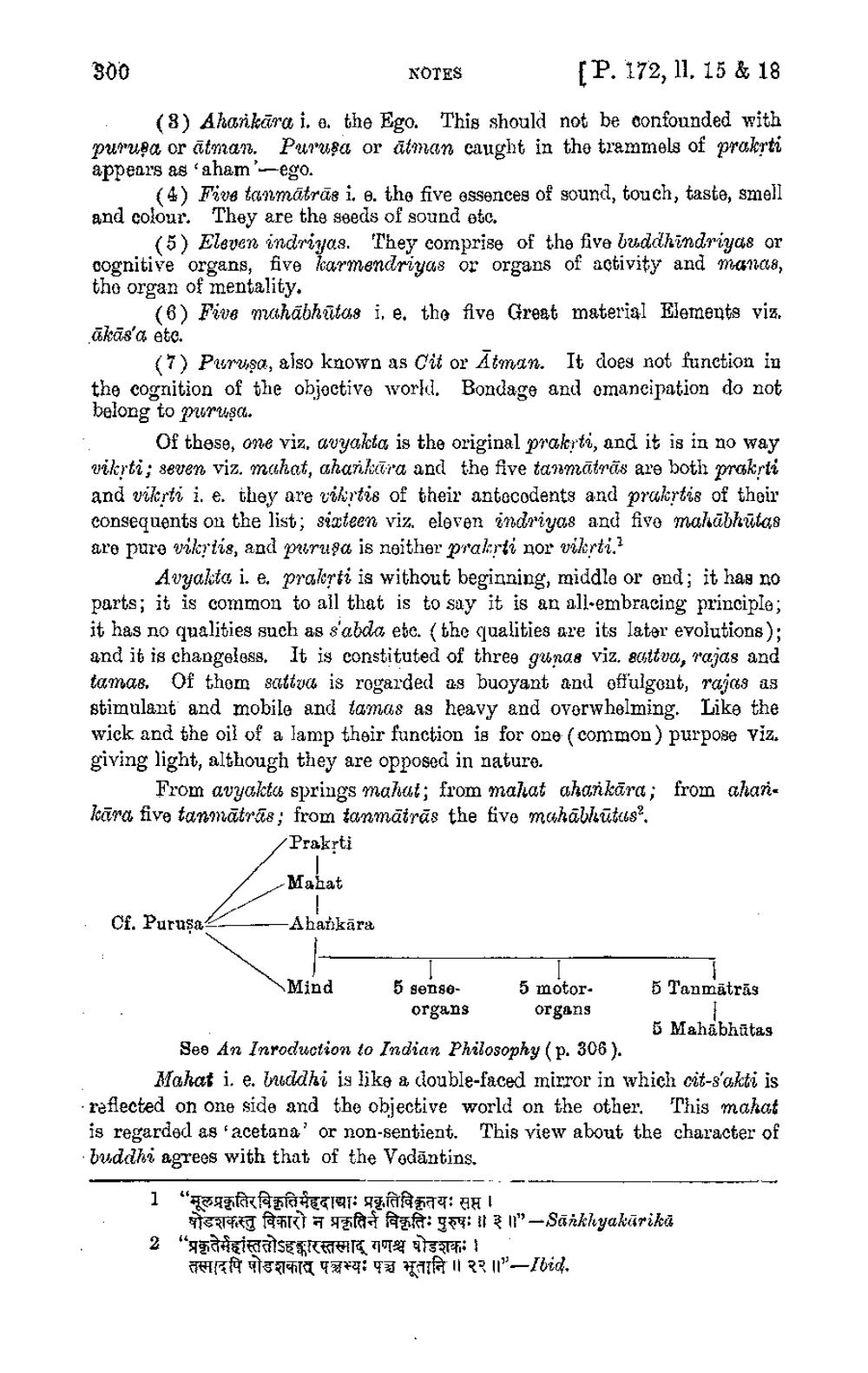________________
300
NOTES
[P. 172, 11, 15 & 18
(3) Ahankāra i. e. the Ego. This should not be confounded with purusa or atman. Purusa or ātinan caught in the trammels of prakrti appears as 'aham'-ego.
(4) Five tanmātrās i. e. the five essences of sound, touch, taste, smell and colour. They are the seeds of sound etc.
(5) Eleven indrivas. They comprise of the five buddhindriyas or cognitive organs, five karmendriyas or organs of activity and manas, the organ of mentality.
(6) Five mahābhūtas i. e. the five Great material Elements viz. akās'c etc.
(7) Puruşa, also known as Cit or Ātman. It does not function in the cognition of the objoctive world. Bondage and omancipation do not belong to puruşci.
Of these, one viz, avyakta is the original prakrti, and it is in 20 way vikrti; seven viz. muhat, ahankara and the five tarımātrās are both praksti and vikrti i. e. they are vikytis of their antocodents and prakrtis of their consequents on the list; sixteen viz. eloven indriyas and five mahābhūtas are pure vikytis, and parusa is neither prakrti nor vikrti.?
Avyakta i. e. pralyti is without beginning, middle or end; it has no parts; it is common to all that is to say it is an all-embracing principle: it has no qualities such as s'abda etc. (the qualities are its later evolutions); and it is changeloss. It is constituted of three gunas viz, sattva, razas and tamas. Of thom sattuu is rogarded as buoyant and offulgent, rajas as stimulant and mobile and tamas as heavy and overwhelming. Like the wick and the oil of a lamp their function is for one (common) purpose viz. giving light, although they are opposed in nature.
From avyakta springs mahat; from mahat ahankāra; from ahanIcāra five tanmātrīs; from tanmātrās the five mahallutus.
Prakrti
Mahat
. Cf. Puruşa
Abatkāra
Mind 5 senge- 5 motor- 5 Tandātrās organs organs
5 Mahabhūtas See An Inroduction to Indian Philosophy (p. 306 ).
Mahat i. e. Iriddhi is like a double-faced mirror in which cit-s'akti is reflected on one side and the objective world on the other. This mahat is regarded as 'acetana' or non-sentient. This view about the character of buddhi agrees with that of the Vodāntins.
---
--
-
---
"मूलप्रकृतिर विकृतिर्महदायाः प्रकृतिविकृतयः सप्त । 91614 Tafa Aa:9 11" -Sankhyakarika "प्रकृतेमहांस्ततोऽहङ्कारस्तस्माद् गणश्च षोडशका THE TEA 7*4: TZ Wall R 11"-Ibid.




